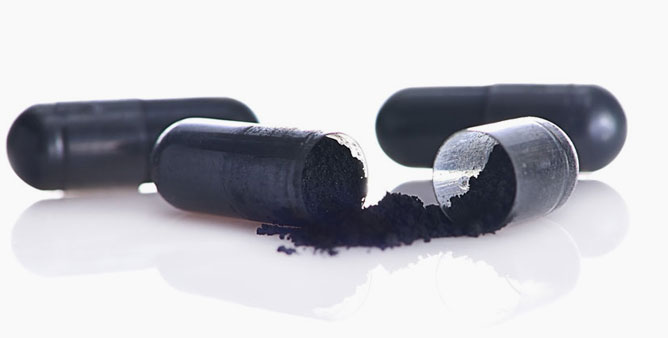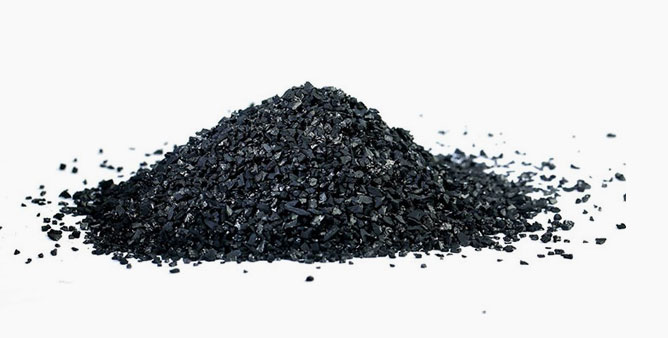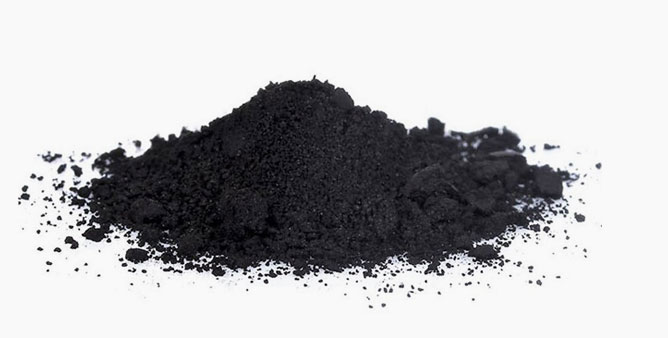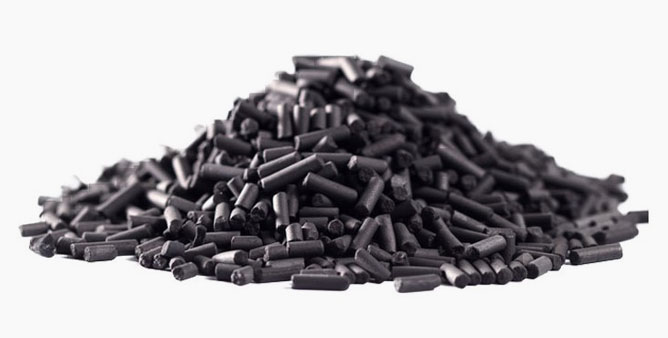ACTIVATED CARBON
Activated carbon has a great adsorption capacity for different pollutants and impurities. It has a wide range of applications, from water or gas treatment to the food, industrial or pharmaceutical sector.
Description of activated carbon
Activated carbon consists of carbonaceous adsorbents that have been processed and present a high degree of crystallization and porosity. It is a material that has a high internal surface (up to 2500 m² / g) due to the nanometric size of its abundant micropores, a fact that gives it a great capacity for adsorption of other chemical elements.
This product is produced by activating carbon from different sources. The activation process can be physical, in the case that the carbonized material is treated with combustion gases and water vapor at high temperatures (around 1000ºC), or chemical, in the case that the carbonized material is treated at temperatures not so high (500-700ºC) with acidic chemical reagents such as phosphoric acid or potassium hydroxide. When the activated carbon is saturated, it can be reactivated and reused through a thermal process in which high temperatures are applied (around 900ºC) to eliminate the elements retained inside the activated carbon.
It is a very versatile product that can be used for various applications, from water or gas treatment to the food, industrial or pharmaceutical sector, in different forms of application (granular, powder or pellets).
Applications
Activated carbon can be applied in the following processes and sectors:
- Treatment of air and gases. The retention of polluting elements in the gases emitted in industrial processes is one of the main applications. By using standard activated carbon you can remove Volatile Organic Compounds (VOCs), odors and recover solvents. Likewise, through the use of impregnated carbons, all those elements that cannot be retained with standard activated carbon can be eliminated, such as the elimination of hydrogen sulfide (in biogas plants), mercaptans, formaldehyde, ethylene, etc. alcohols, ammonia, or mercury vapors. In other words, thanks to the high internal surface and / or a specific impregnating agent for each compound, activated carbon can eliminate or retain a great variety of gases and vapors.
- Treatment and potabilization of water. Active carbon acts as an adsorbent, eliminating polluting and undesirable elements from the water such as pesticides, herbicides, ozone and organic compounds that cause bad odor or taste. Activated carbon of vegetable origin from pine wood has macropores and is applied to the removal of chlorine, oils, fats and natural organic matter (MON) from waste and surface waters. In the same way, the carbon that comes from the coconut shell that has micropores is used for the purification of well water, the elimination of odors and flavors and the retention of volatile compounds. Lastly, coal of mineral origin from bitumines, which has mesopores, is applied in the purification of wastewater with pollutants of intermediate molecular weight.
- Food industry. The entire range of activated carbons for the food sector complies with the Food Chemical Codex certificates of compliance with food suitability. It is used in vegetable oils to remove polycyclic aromatic hydrocarbons (PAHs), in wines and alcoholic beverages for flavor and odor refinement, in fruit juices to remove oxides and other impurities, in non-alcoholic beverages to remove chlorine in processed water , in candies and sweets for bleaching processes, and in the purification of additives such as monosodium glutamate, glycerin, glucose, essential oils or sweeteners.
- Pharmaceutical industry. Depending on the activation process and the shape of the carbon, it can be developed specifically for the pharmaceutical sector. Activated charcoal is applied to facilitate the manufacture and purification of vitamins or antibiotics and to purify blood fluids or to be used as medicinal charcoals.
- Chemical industry. Activated carbons can also be adapted to the chemical industry. For example for the recovery of solvents, for textile dyes, for the removal of mercury or for organic acids.
- Other industrial applications. As has already been seen, activated carbon has a high adsorption capacity and great versatility that allow it to eliminate impurities, retain polluting elements or recover solvent vapors. These diversity of functions allows it to be applied in a multitude of industrial sectors, from mining to the nuclear sector. Other examples of uses in industry are the recovery of metals, their application in synthetic fibers, in biodiesel or in the purification of amino acids.

Specifications of activated carbon in pellets
Supply
If you have any questions about the product or request a quote, please contact us here.





